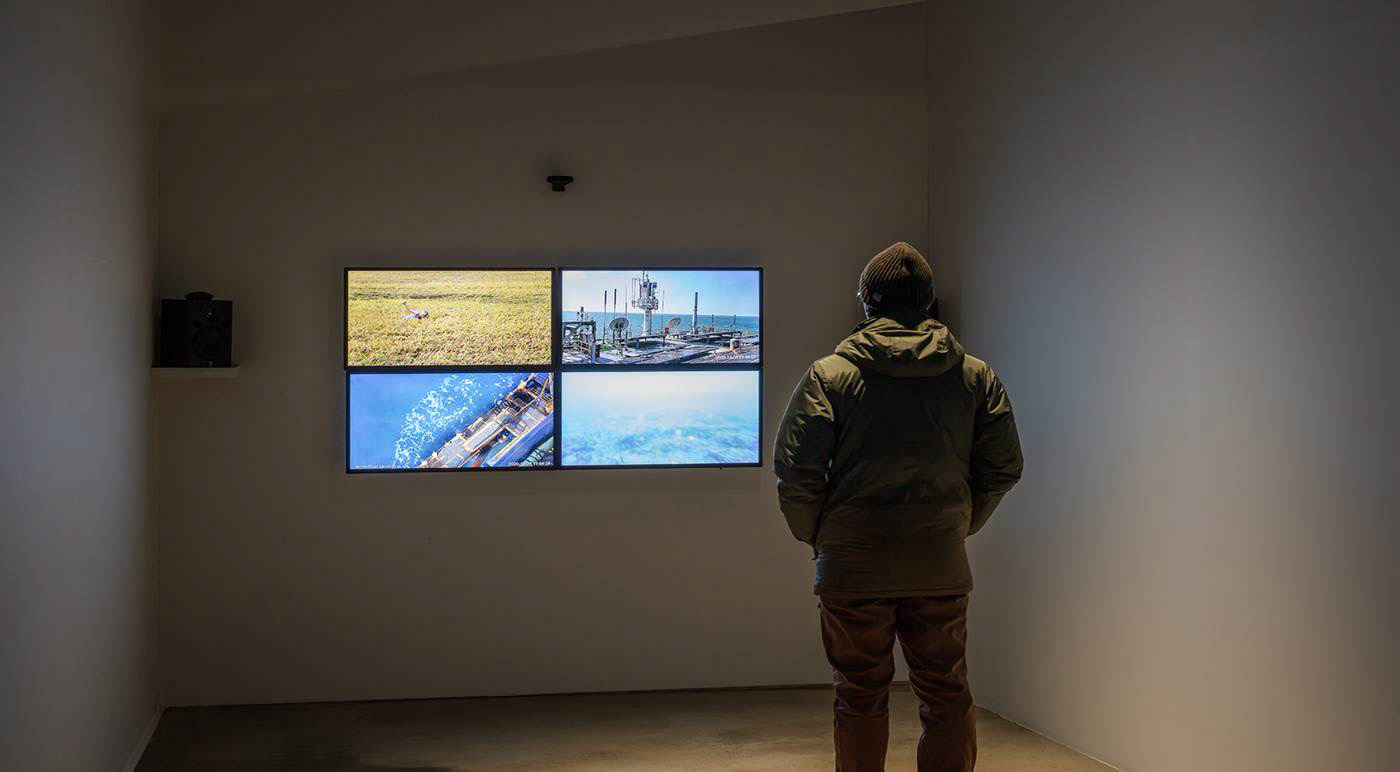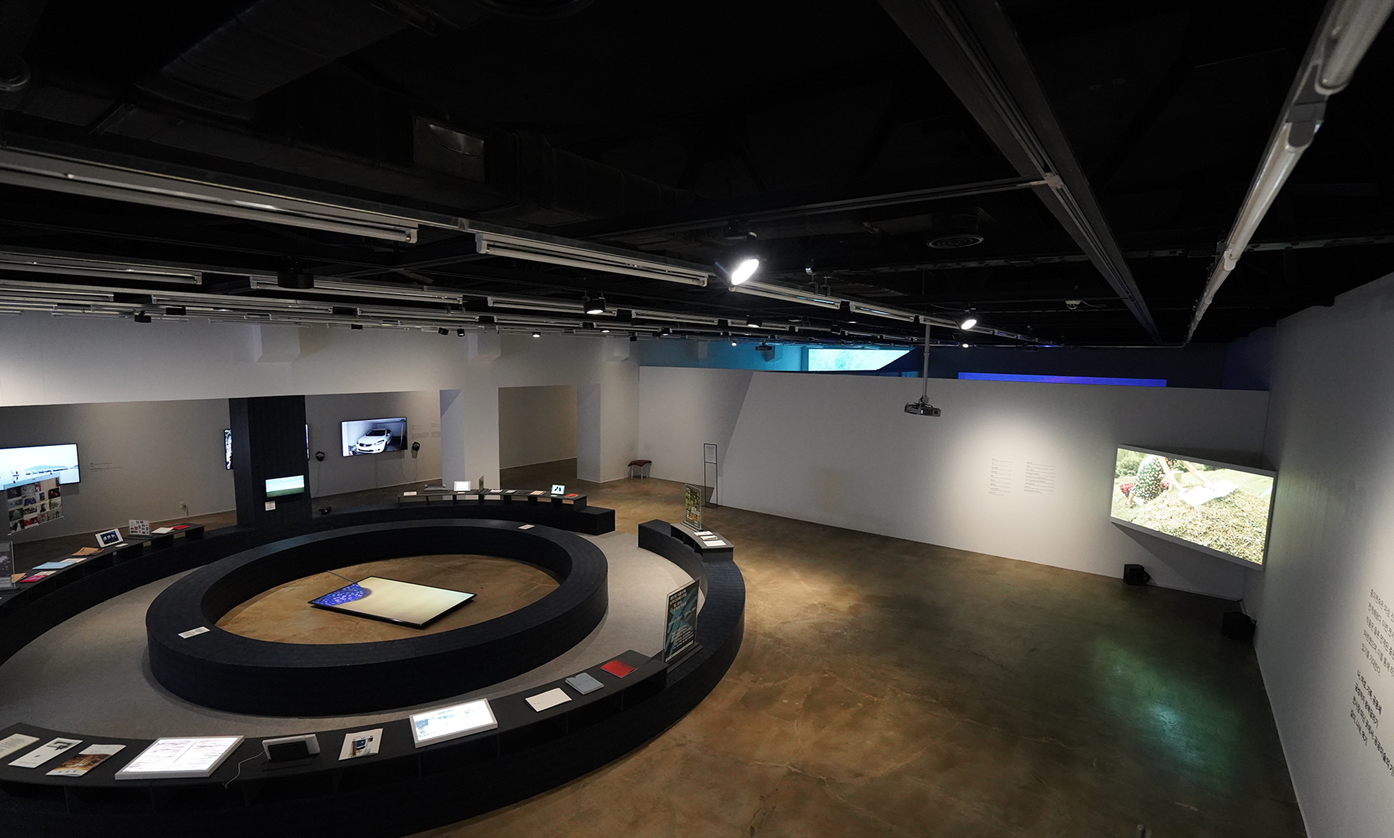


미완결: 머무르지 않는 노래 - 김미정 큐레이터 2021
전시장에 부착하기 위한 〈고래자세〉(2018), 〈사자자세〉(2017) 작품 설명을 작성하면 서 나는 ‘실패’라는 단어를 썼다. 이 단어가 일반적으로 통용되는 의미를 알기에 사용을 망설였지만, 두 작품을 포함해 〈소리의 포말〉(2020)과 이번 전시의 연계 프로그램으 로 진행한 〈비봉 소리요가: 고래와 함께 미술관에서 소리로 요가하기〉(2021)에서 고래의 소리를 성실히 발화하는 작가를 볼 때마다 물음표를 띄웠던 기억을 떠올린다. 누군가가 되려고 하는 시도는 어떤 방식이든 미끄러진다. 고래의 소리를 ‘휙뽀옥’으로 받 아쓴다 해도 동일하게 소리 낼 수 없으며, 사자의 포효가 요가의 사자자세와 일치할 수 는 없기 때문이다. 사실 작가는 자신이 비인간 동물이 되려는 과정이 늘 실패의 연속임 을 충분히 인지하고 있다. 그렇기에 이 과정들은 되기를 위한 완벽한 모방이라기보다, 다른 세계에 속하는 존재와 관계를 맺고 그 사이를 가로지르는 결연으로서의 융합에 가깝다. 그리고 작가는 무모해 보이는 이 시도조차 없다면 고래를, 사자를 그리고 나 아닌 다른 존재를 이해하는 일이란 불가능하다고 단호하게 선을 긋는다.
그 실패들은 오히려 작가로 하여금 비인간 동물에게 다가가기 위한 또 다른 동력으로 작동된다. 작가 스스로가 작업이 수행이라고 말하는 지점은 결국 이러한 실패의 반복이 쌓이는 일일지도 모르겠다. 그럼에도 누구도 혼자가 아니며 누군가에게 이끌려서 예기 치 못한 삶으로 끌려들어 가지 않는다면 아무 일도 일어나지 않는다는 해러웨이의 말 처럼, 작가는 비약적인 상상력을 매개로 비인간 동물과의 결연을 자처하며 알 수 없는 그들의 삶 속으로 자신을 계속해서 밀어 넣는다. 전시장 벽에 그렇게 실패라는 단어를 붙이며 부디 누군가 그 단어의 범위와 의미를 이 해해 주길 바라면서도 한편으로 “도대체 왜 이렇게까지…?”라는 질문이 전시장에 가득했으면 했다. 물론 그 질문에 작가는 작품으로 몇 번이고 대답했겠지만, 이 전시가 끝나도 어딘가에서 고래, 사자 혹은 비인간 존재의 언어를 온몸으로 노래하고, 다가갈 수 없는 대상과의 접촉을 설명하고〈지금 당신이 만지는 것〉(2020), 논밭에서 바다를 그리며〈각각의 이어도〉(2020) 헤엄치는 그를 다시 만나는 건 어렵지 않을 것같다.
Unfinished: Songs That Do Not Stay - Kim Mi-jung Curator, 2021
While writing the wall text for Being a Whale (2018) and Being a Lion (2017), I chose to use the word “failure”. I admit that I was quite hesitant about it due to its ordinary meaning. The two works mentioned above, The Sea Form of Sound (2020) and the exhibition-related program Bibong Sound Yoga: With Whale in ARKO Art Center (2021), in which the artist earnestly produces the sounds of whales, always brought a question mark to my mind. There is always slippage in efforts to be something else, regardless of how they are done. Even if one transcribes the sound of the whale as “shooshpop,” it never matches the actual sound. A yoga posture cannot be identical to a roaring lion. The artist fully understands that her endeavors to be a non-human animal always fail. Therefore, her efforts are meant to create a fusion as an alliance, which is an act of forming a relationship with beings from a different world and crossing the in-between space.8 The artist also firmly believes that without these seemingly unreasonable efforts, it is never possible to understand whales, lions, and the lives of others.
The failures become another source of motivation for the artist to come closer to non-human animals. The artist referring to her art as a “practice” (as if it were a religious practice) may point to the accumulation of repeated failures. However, in line with Haraway’s statement that no one is alone and that nothing will happen unless one is taken into an unanticipated life by another being, the artist deliberately becomes an ally to non-human animals through her excessive imagination and keeps pushing herself into their ever-unknowable lives. When I placed the word “failure” on the gallery walls, I hoped that someone would understand how expansive the meaning of the word can be. I also wish that the galleries will be filled with questions like “Why is she pushing herself to this extreme?” The artist would be willing to answer the question over and over through her work. However, even after this exhibition closes, one will easily run into Hong Lee, Hyun-Sook, who physically sings the language of non-human beings, talks about being in contact with beings that she cannot get close to (What You Are Touching Now, 2020), and swims in a rice paddy field while dreaming of the sea (Each One’s Own Ieodo, 2020)